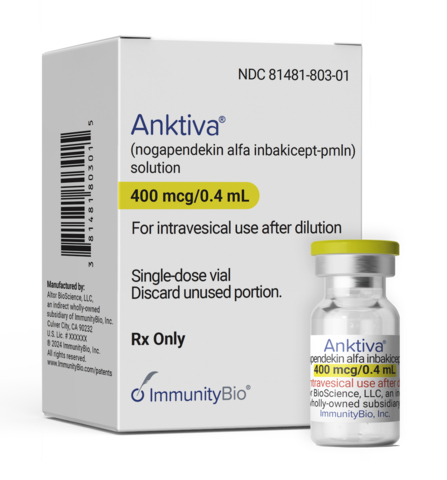The US Food and Drug Administration (FDA) has approved the first gene therapies for the treatment of sickle cell disease, approving two on the same day. The landmark approvals were awarded to bluebird bio’s Lyfgenia (lovo-cel) and Vertex Pharmaceuticals and CRISPR Therapeutics’ jointly developed Casgevy (exa-cel). Both gene therapies are approved for individuals 12 years of age and older with sickle cell disease.
Casgevy is also the first ever CRISPR/Cas9-based therapy approved in the US. The revolutionary CRISPR/Cas9 technology was discovered by Jennifer Doudna and CRISPR Therapeutics co-founder Emmanuelle Charpentier who both shared the 2020 Nobel Prize for it.
The CRISPR system is dubbed to be molecular “scissors” that can cut out parts of genes that are abnormal, deactivating or replacing them with new strands of normal DNA. This has tremendous potential for curing diseases that are caused by faulty/mutated genes.
Sickle cell disease is a group of inherited red blood cell disorders that affect approximately 100,000 people in the US, most of whom are Black. It also affects Hispanic Americans, but at a lower prevalence.
The disease occurs due to a point mutation in the hemoglobin beta globin (HBB) gene that codes for one of the proteins that make up hemoglobin, the oxygen carrier in red blood cells. The mutation causes red blood cells to develop a crescent or “sickle” shape. The sickled red blood cells obstruct flow in blood vessels, limiting oxygen delivery to tissues in the body, which leads to severe pain and organ damage called vaso-occlusive events (VOEs) or vaso-occlusive crises (VOCs). The recurrence of these events, or crises, can lead to life-threatening disabilities and/or early death.
The FDA’s decision on the therapies came earlier than the given December 20 target decision date.
Current treatments for sickle cell disease include blood transfusions but patients often have episodes of intense pain and an increased risk of stroke. It can also make patients more susceptible to complications like anemia, jaundice, infections and gallstones. A bone marrow transplant from a donor can offer a potential cure, but it is often difficult to find a matching donor and the procedure carries the risk of rejection by the immune system.
XTALKS WEBINAR: Cryopreservation Best Practices for Cell & Gene Therapy Source Material
Live and On-Demand: Monday, January 22, 2024, at 11am EST (4pm GMT/UK)
Register for this free webinar to learn about cryopreservation, a vital step in the manufacturing of today’s cell and gene therapies.
How do Casgevy and Lyfgenia Work?
Both Casgevy and Lyfgenia involve modifying the hematopoietic stem cells of patients with the disorder (to produce normal hemoglobin) and then injecting them back into patients, leading to the generation of red blood cells with normal, functional hemoglobin. The process leading up to injection includes blood transfusions over three to four months, extraction of stem cells and chemotherapy to destroy the bone marrow to ensure there are no remaining defective stem cells.
While Lyfgenia delivers a functional copy of hemoglobin A to replace the abnormal one in hematopoietic (blood) stem cells via a lentiviral vector, Casgevy edits the HBB gene using CRISPR technology to increase the production of fetal hemoglobin in blood stem cells.
Both therapies will be available in early 2024.
“Casgevy’s approval by the FDA is momentous: it is the first CRISPR-based gene-editing therapy to be approved in the US. As importantly, Casgevy is a first-in-class treatment that offers the potential of a one-time transformative therapy for eligible patients with sickle cell disease,” said Reshma Kewalramani, MD, CEO and president of Vertex in a statement.
In a press release, bluebird bio CEO Andrew Obenshain said, “Lyfgenia has the potential to have a transformational impact for patients who currently live under the shadow of unpredictable and debilitating vaso-occlusive events. This approval also marks bluebird’s third ex vivo gene therapy approved by the FDA for a rare genetic disease and second FDA approval for an inherited hemoglobin disorder, cementing our position as a gene therapy leader.”
In 2022, bluebird won approvals for two gene therapies — Skysona for the treatment of the rare neurological disorder cerebral adrenoleukodystrophy (CALD) and Zynteglo for beta-thalassemia.
The company has been facing financial woes despite the big approvals. However, some industry analysts say bluebird’s Lyfgenia could have an edge over competitor Casgevy as bluebird has already built a network of qualified treatment centers with Zynteglo having been approved by the FDA 14 months ago.
In a call with investors, Tom Klima, bluebird’s chief commercial and operating officer, said of the 35 existing centers for Zynteglo, 27 are ready to receive Lyfgenia patient referrals, and the rest will be fully activated by the end of the first quarter 2024. Analysts at Cantor explained that Vertex only has nine centers for Casgevy, including six that also offer Lyfgenia.
bluebird expects cell collection for the first Lyfgenia patients to begin in the first quarter of 2024. Obenshain said the company will book revenue when the final product is infused, and that the product manufacturing could take 70 to 105 days.
Analysts at J.P. Morgan were also hopeful about bluebird’s clearer commercialization plan for Lyfgenia and market readiness from Zynteglo. However, a William Blair team pointed to Vertex’s general “extensive commercial experience” as a threat to bluebird being able to compete in the commercial market.
Related: Roctavian Becomes First Gene Therapy for Severe Hemophilia A to Get FDA Nod
Lyfgenia and Casgevy Price and Warnings
The price tags of both gene therapies are steep, given the complexity of developing gene therapies and as therapies meant to be one-time treatments. Vertex-CRISPR’s Casgevy has a US list price of $2.2 million and bluebird’s Lyfgenia is 40 percent higher at $3.1 million, despite both having similar efficacy. The Institute for Clinical and Economic Review (ICER), the drug pricing watchdog in the US, had said earlier that both therapies could be cost-effective at a price up to $2.05 million after discounts.
Lyfgenia’s price reflects its clinical value and the positive impact it has on the healthcare system and on patients, said Klima. However, the same can be said of Casgevy as clinicians do not see any significant difference between the two treatments.
J.P. Morgan analysts said they expect that after discounts, the net prices of the two drugs should be similar for treatment centers.
In addition to the higher price tag than its competitor, bluebird’s Lyfgenia may be at an added disadvantage as the FDA added a boxed warning (the highest warning level on a drug) to its label for the risk of blood cancer after two patients in the company’s Lyfgenia trial developed acute myeloid leukemia (AML) after treatment. FDA officials said it had not seen such cases in Vertex patients, but would look out for side effects.
Casgevy comes with a warning about off-target editing in the “Warnings and Precautions” section of the therapy’s label, which is less serious than a boxed warning. The off-target concern is largely theoretical at this point as no cases have been observed after its administration.
In October, an FDA advisory committee cleared exa-cel on the safety front in regards to off-target effects.
Data on the long-term effects of the therapies is limited, as trials evaluating the therapies were only two years long. Vertex-CRISPR and bluebird plan to assess potential long-term safety risks through a 15-year follow-up study after approval. The FDA said patients treated with the therapies would be monitored throughout their lives for malignancies.
Trial Data
In trials evaluating the therapies, treatment with Lyfgenia led to complete resolution of VOEs in 28 of 32 patients (88 percent).
In the Casgevy trial, 29 of 31 patients who received the treatment experienced freedom from severe VOC episodes for at least 12 consecutive months during the 24-month follow-up period.
In separate clinical trials, both treatments helped reduce painful episodes in patients with the disease, with 29 of 31 patients receiving Casgevy, and 28 of 32 patients on Lyfgenia showing improvement.
Lyfgenia and Casgevy join a growing list of cell and gene therapies approved by the FDA. The first to be approved was Novartis’ Kymriah in 2017 and now the list includes about two dozen. Lyfgenia and Casgevy are being touted as potential game changers in the cell and gene therapy space.
Bluebird’s Lyfgenia is also being reviewed by the FDA for another blood disorder, transfusion-dependent beta-thalassemia, the decision for which is expected by March 30.












Join or login to leave a comment
JOIN LOGIN